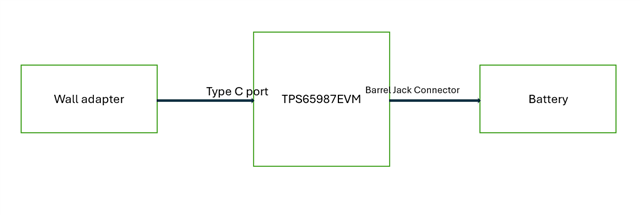Other Parts Discussed in Thread: TPS65987DDK, , TPS65987, TPS25751, BQ25798
Tool/software:
Hi,
I am using a TPS65987DDK evaluation board out of the box to charge a battery. As I understand, out of the box the EVM is configured in a DRP and should support the EVM to act as a load.
I have put the jumpers J4 and J5 in the suggested positions as given in the user guide. The unit power ups when I connected a type C wall adapter and I can see output voltage at the barrel jack connector. However, as soon as I connect a battery to the connector, the unit switches off. The SYS_PWR LED is glowing, but the VAR DC DC led switches off. The wall adapter connected also switches off. The wall adapter used here is a 65W laptop charger.
Please suggest if I am doing something wrong.
Thanks
Shwetanshu




